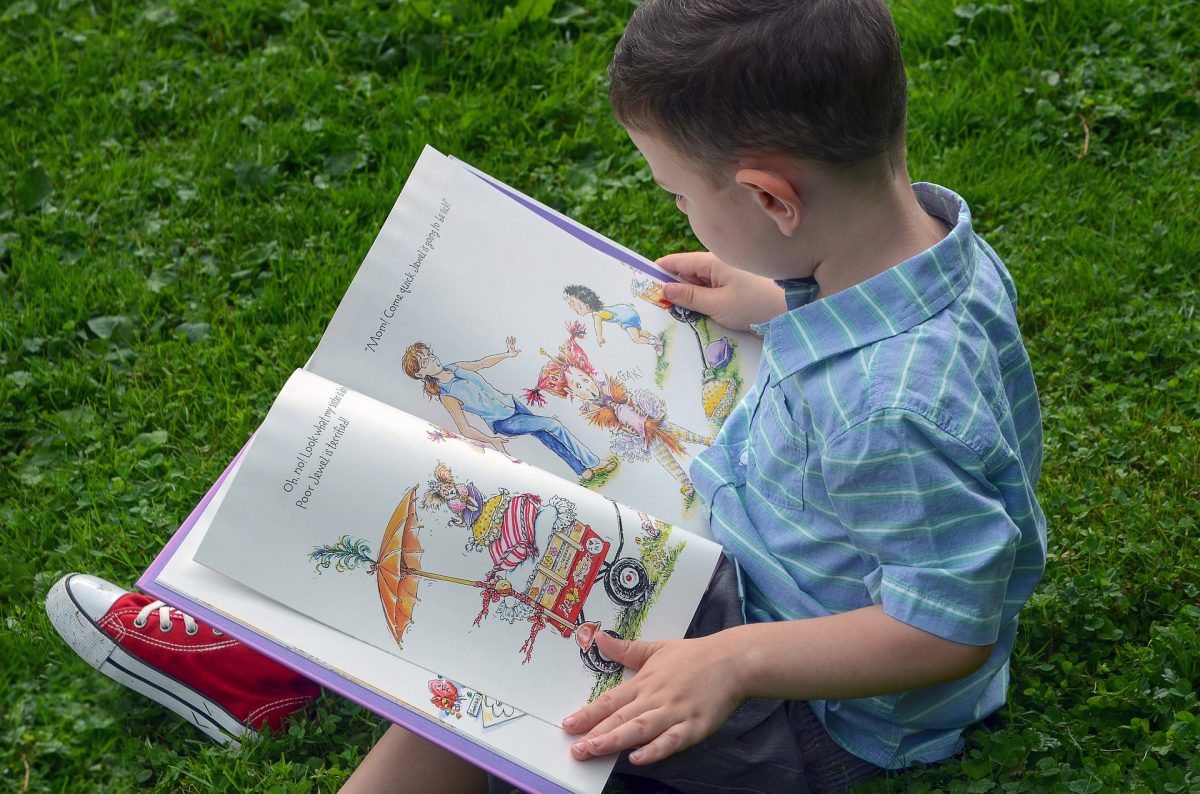Phonics for Young Learners

As a teacher I can confidently say that there’s a lot to learn when starting school. Beginning with making new friends, to building confidence with letters and numbers, and learning much more through play; however, learning how to read is taught systematically, from their first days at preschool through their first years in elementary school.
It can be challenging at times to figure out how to best support your child through these early stages of reading, especially since teaching methods have definitely changed since you were in school! Before you can begin to teach your child to read, I have provided a short list of “buzz words” to help you out!
Phonics: using the sound made by a letter and groups of letters to read words.
Decoding: using the knowledge of phonics to sound out and read words.
Grapheme: a written single letter or group of letters, like “s”, “a”, or “she”.
Diagraph: two letters that make one sound together, for example “sh”.
Phoneme: the sound a letter or group of letters make. An example is the word “mat”, which has 3 phonemes, “m”, “a”, and “t”.
Sounding Out: using your phonic knowledge to help you say the sounds within a word; e.g., “r-e-d”, pronouncing each phoneme.
Blending: reading the sounds in the word all together to read the whole word; e.g., “r-e-d, red” or “m-o-m, mom”.
High-Frequency Words: also known as “common exception words”, we use these common words often, but aren’t always decodable using phonics. Examples of high-frequency words are, “the”, “one”, and “where”; children are taught to recognize these words on sight.
The most important word out of that list when teaching your children to read is phonics. Phonics, using the sound made by a letter and groups of letters to read words, is so widely used because there is an abundance of research showing it works! In preschool or nursery school, children begin to develop their listening skills so that they can tune in to the different sounds in words, laying the foundation to learn names and sounds.
The next step takes place in primary school, where children learn the letters of the alphabet in a set order, and the sound of each letter. Once that is learned, children can begin to sound out and read short, simple words. Remember, the purpose of phonics is to have your child reading as easily and quickly as possible so they can feel confident to read whatever they like! Reading is meant to be fun, and no one wants it to turn into a chore, so here are some tips to have success when teaching your child to read with phonics:
Keep it short and sweet: Ten minutes is often long enough to keep your child’s attention on a phonics lesson, and will prevent them from getting bored.
Quality time: pick a time to read when your child is not too tired, and try to find a quiet place where they won’t be distracted by screens, siblings or pets. Even when your child becomes a strong independent reader, keep on reading with them! Not only are their reading skills important, but that quality time you spend together is too!
Form a partnership with the teacher: Ask your child’s teacher how you can highlight reading and phonics inside the home and feel free to express any concerns you may have.
Spread the joy of reading: Keeping plenty of books and/or magazines around the home will show your child how valuable reading is, while cultivating a lifelong love of reading
In my experience, most children begin to put their phonics knowledge into practice when they transition from a toddler to a young reader. At this age, the focus has shifted from using phonics only for reading, to using phonics for spelling. However, it’s not uncommon for young readers to go back and revisit their phonics knowledge, so don’t worry if your child isn’t completely confident yet.
Keep up with reading to your child, especially books that appeal to their interests and topics that excite them. Remember, “children see, children do”, let them see you read and enjoying books or magazines, you’d be surprised how quickly they’ll be grabbing books of their own! The key thing here is to not let your child become stressed or upset; keep a positive attitude and reinforcement, continue reading, and keep the lessons short and fun.
Teaching children is not a simple task, and if after reading these steps you’re left feeling a little overwhelmed, no need to worry, I have a solution for that too! Click the link below to see how Sarah Shepard, a fellow teacher, has taught over 35,000 children how to read with her program Reading Head Start!